Chestnut Bay |
||||||||||||||||||||||
 |
 |
|||||||||||||||||||||
Crocheted sweater in DROPS Brushed Alpaca Silk and DROPS Flora. The piece is worked from the middle outwards, in squares. Sizes S - XXXL.
DROPS 244-14 |
||||||||||||||||||||||
|
------------------------------------------------------- EXPLANATIONS FOR THE PATTERN: ------------------------------------------------------- CHAIN STITCH: If you work outermost on the hook the chain stitch will often be too tight; 1 chain stitch should be as long as 1 double crochet is wide. PATTERN: See diagrams A.1 to A.5. A.4 and A.5 show decreases under the sleeve. CROCHET INFORMATION: At the beginning of each round/row of double crochets work 3 chain stitches which replace the first double crochet. The round finishes with 1 slip stitch in the third chain stitch at the beginning of the round when working in the round. The row finishes with 1 slip stitch in the third chain stitch at the beginning of the previous row when working back and forth. ------------------------------------------------------- START THE PIECE HERE: ------------------------------------------------------- SWEATER - SHORT OVERVIEW OF THE PIECE: The front and back pieces are worked separately, in the round, from the middle outwards and in a square. The sides are worked back and forth to get the correct body-width. The shoulders are worked back and forth. The piece is sewn together and the sleeves are worked in the round, top down. The neck is worked to finish. FRONT PIECE: Square: Use crochet hook size 4.5 MM = US 7, 1 strand DROPS Brushed Alpaca Silk and 1 strand DROPS Flora (2 strands). Work diagram A.1 in the round. When A.1 is finished, continue the increases as shown in A.1 until the square measures approx. 53-55-56-58-59-61 cm x 53-55-56-58-59-61 cm = 21"-21⅝"-22"-22¾"-23¼"-24" x 21"-21⅝"-22"-22¾"-23¼"-24" (after every round worked, there is 1 more double-crochet group between each corner). REMEMBER THE CROCHET GAUGE. The square in size S is now finished. Continue the sides in the other sizes as described below. SIDES - SIZES M - L - XL - XXL - XXXL: Crochet on each side as follows: Start from the right side with 1 slip stitch in one corner of the square and continue as follows: Work A.2a, A.2b to the next corner, A.2d around the chain-space in the corner. Turn and work like this back and forth until 2-2-4-6-8 rows have been worked from the square. Cut and fasten the strands. Work the other side of the square in the same way. SHOULDERS AND NECK – ALL SIZES: Start from the right side and work 2 rows across the top of the square as follows: 1 slip stitch in the corner, A.2a (NOTE: in sizes M, L, XL, XXL and XXXL work around the last row in the corner), work 0-1-1-2-3-4 repeats of A.2b around the 0-2-2-4-6-8 rows on the side, continue A.2b to the other side of the square and work 0-1-1-2-3-4 repeats of A.2b around the 0-2-2-4-6-8 rows, finish with A.2d in the corner. Work back from the wrong side. Insert 1 marker-thread on each side of the middle 7 or 8 double-crochet groups on the row (= neck). If you have an even number of double-crochet groups, insert the marker-threads around the chain stitches on each side of the middle 8 double-crochet groups, if you have an odd number of double-crochet groups, insert the marker-threads around the chain stitch on each side of the middle 7 double-crochet groups. Start from the right side and work the right shoulder as follows: Work 1 slip stitch in the corner, A.2e, continue A.2b as far as the first chain stitch with the marker-thread, work A.2c around this chain stitch. Turn and work next row from the wrong side. Continue back and forth for a total of 5-5-6-6-7-7 rows (the shoulder measures approx. 9-9-10-10-11-11 cm = 3½"-3½"-4"-4"-4⅜"-4⅜" from the square). Cut and fasten the strands. Skip the 7/8 double-crochet groups for neck and work the left shoulder from the right side as follows: Work 1 slip stitch around the chain stitch with the marker-thread, A.2e, A.2b to the corner of the square and A.2c in the corner. Turn and work back and forth a total of 5-5-6-6-7-7 rows (the shoulder should match the right shoulder. BACK PIECE: Work the square and the sides in the same way as the front piece. Then work shoulders and neck in the same way as the front piece, but first work 4-4-4-4-6-6 rows back and forth across all stitches (instead of 2 rows – the first row is worked from the right side). Insert 1 marker-thread on each side of the middle 7 or 8 double-crochet groups in the same way as on the front piece, working the shoulders in the same way but finishing after 3-3-4-4-3-3 rows on the shoulders (=7-7-8-8-9-9 rows after the square). ASSEMBLY: Sew the shoulder seams together, edge to edge. Insert a marker-thread around 1 chain stitch, 8-8-9-9-10-10 rows/double-crochet groups down from the shoulder seams on both the front and back pieces = approx. 20-20-23-23-25-25 cm = 8"-8"-9"-9"-9¾"-9¾" armholes. Crochet the side seams together, working through both layers and from the wrong side as follows: Start at the marker-thread and work 1 single crochet around the chain stitch, * work 4 chain stitches, skip 3 double crochets, 1 single crochet around the next chain stitch *, work from *-* until there is 15 cm = 6" left = split. Repeat on the other side. SLEEVES: The sleeve is worked in the round. Start at the bottom of the armhole by the marker-threads and work from the round with an arrow in each diagram as follows: Work A.4, 6-6-7-7-8-8 repeats of A.3b up to the shoulder seam, work the first double crochet in A.3b in the seam, work 6-6-7-7-8-8 repeats of A.3b from the shoulder seam and finish with A.5. Continue this pattern. When A.4 and A.5 are finished, 2 double-crochet groups have been decreased under the sleeve = 14-14-16-16-18-18 double-crochet groups. Repeat this decrease 1 more time = 12-12-14-14-16-16 double-crochet groups. Continue as follows: Work A.3a (shows how the round starts), A.3b to the last chain stitch on the round, finish with A.3c. Continue this pattern until the sleeve measures 46-45-44-42-40-38 cm = 18"-17¾"-17¼"-16½"-15¾"-15", cut and fasten the strands. Work the other sleeve in the same way. NECK: Use crochet hook size 4.5 MM = US 7 and 1 strand of each quality (2 strands). Fasten the strands with 1 slip stitch in the shoulder seam, work 1 chain stitch, * 3 chain stitches, skip 1 double-crochet group, 1 single crochet around the next double crochet/chain stitch *, work from *-* around the neck, finish with 1 slip stitch in the first chain stitch on the round = 30 to 36 chain-spaces. Work as follows: ROUND 1: Work 3 double crochets around each chain-space = 90 to 108 double crochets. ROUND 2: Work 1 double crochet in each double crochet but decrease evenly by working every 8th and 9th double crochet together (work 1 double crochet but wait with the last yarn over and pull-through, work 1 more double crochet and pull the last yarn over through all 3 loops on the hook) = 80-96 double crochets. ROUND 3: Work 1 double crochet in each double crochet but decrease evenly by working every 7th and 8th double crochet together = 70-84 double crochets. ROUND 4: Work 1 double crochet in each double crochet. Cut and fasten the strands. |
||||||||||||||||||||||
Diagram explanations |
||||||||||||||||||||||
|
||||||||||||||||||||||

|
||||||||||||||||||||||
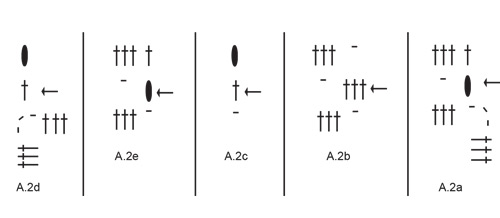
|
||||||||||||||||||||||
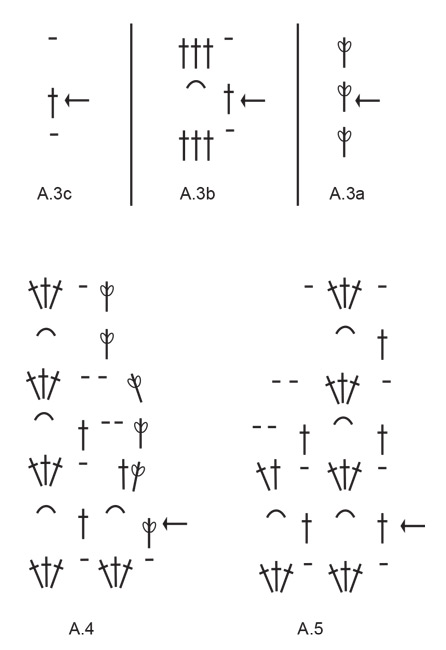
|
||||||||||||||||||||||
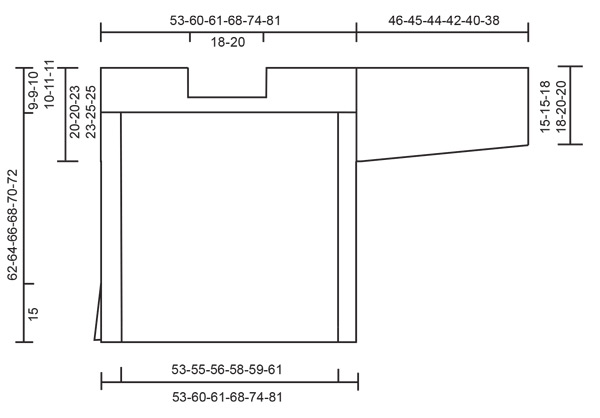
|
||||||||||||||||||||||
|
Have you made this or any other of our designs? Tag your pictures in social media with #dropsdesign so we can see them! Do you need help with this pattern?You'll find tutorial videos, a Comments/Questions area and more by visiting the pattern on garnstudio.com. © 1982-2024 DROPS Design A/S. We reserve all rights. This document, including all its sub-sections, has copyrights. Read more about what you can do with our patterns at the bottom of each pattern on our site. |
||||||||||||||||||||||







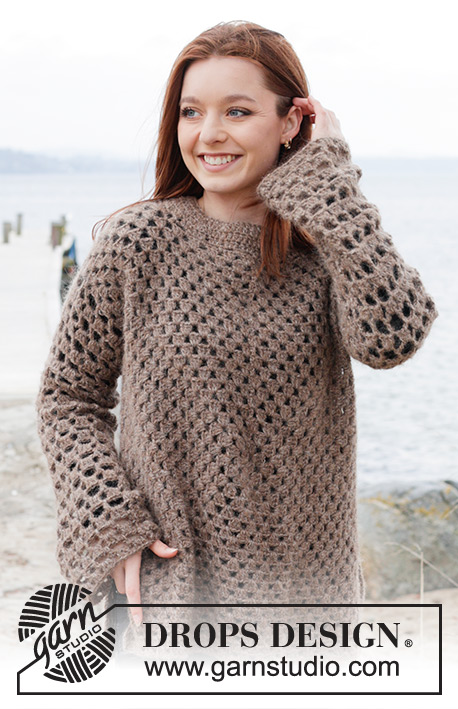
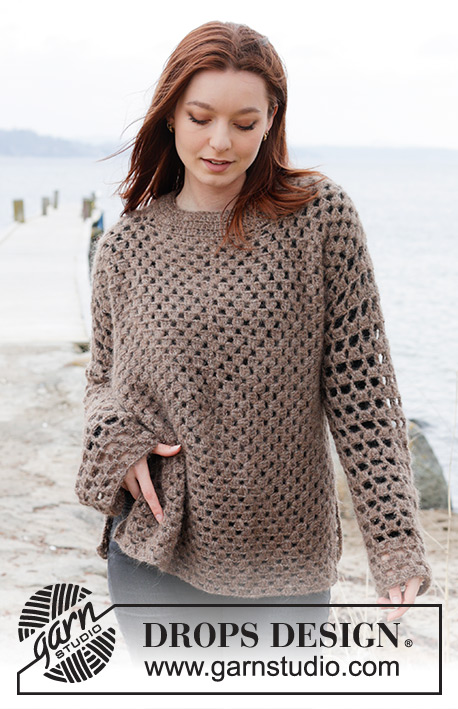
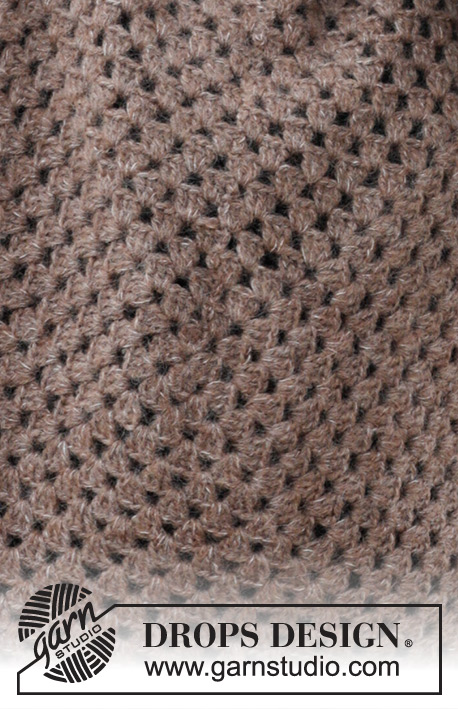




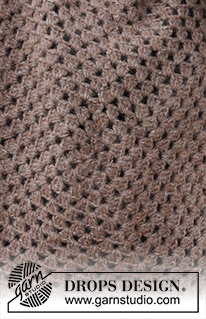





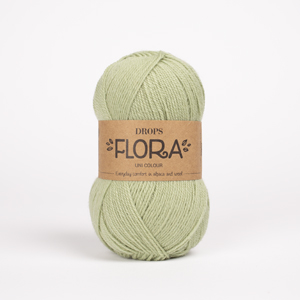
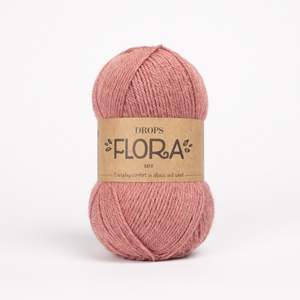








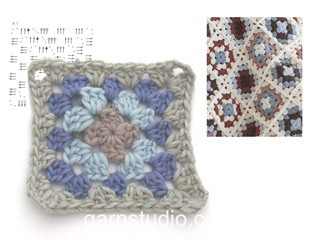




















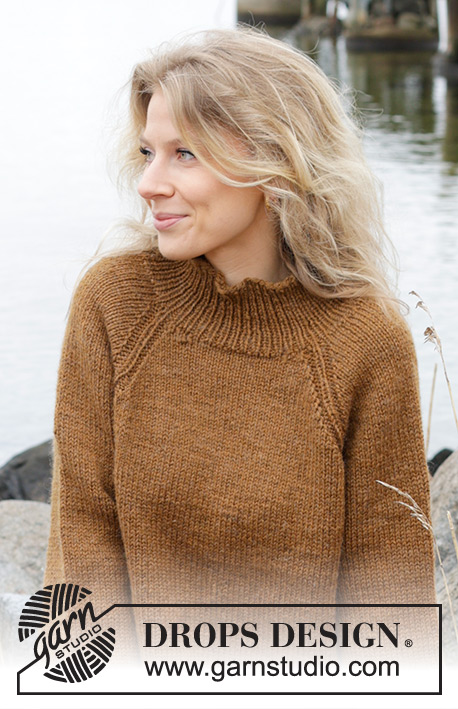







Comments / Questions (9)
Ola bom dia. Nao consigo perceber a parte do decote e ombros, onde diz: crochetar a2b a volta de 2 carreiras do lado do quadrado. Qual lado? Se o quadrado tem 4? Nao consigo perceber esta parte . Depois de aumentar 2 carreiras de cada lado o que fazer a seguir. Podem por video? Onde esta o diagrama a2. Obrigada
09.03.2024 - 15:34DROPS Design answered:
Boa tarde, O ombros crochetam-se no rebordo superior do quadrado e desce-se para um lado, depois, volta-se para o outro lado, "Começando pelo direito, crochetar 2 carreiras ao longo da parte de cima do quadrado da seguinte maneira: Crochetar 1 ponto baixíssimo no canto, A.2a..." Bons crochés!
11.03.2024 - 15:09I am reading through the pattern before beginning, and the body shaping (for sizes above S) calls for following diagrams A.2, A.2b, and so on. But I can't see any A.2's on the diagram- am I not seeing them, or are they on another page? I looked at the Norwegian page, but it is the same. Thanks very much!
20.09.2023 - 19:47DROPS Design answered:
Dear Joanne, thanks for noticing, diagrams have been now upload again - please refresh the page to be able to see them. Happy crocheting!
21.09.2023 - 11:09Honeycomb
07.08.2023 - 12:03Chocolate
06.08.2023 - 21:25Mantle
05.08.2023 - 13:02Détente
04.08.2023 - 14:28Sweater weather
04.08.2023 - 09:00Ilahduttavan persoonallinen eli yksilöllisempi neule😍
03.08.2023 - 19:45Holey chocolate
03.08.2023 - 19:22